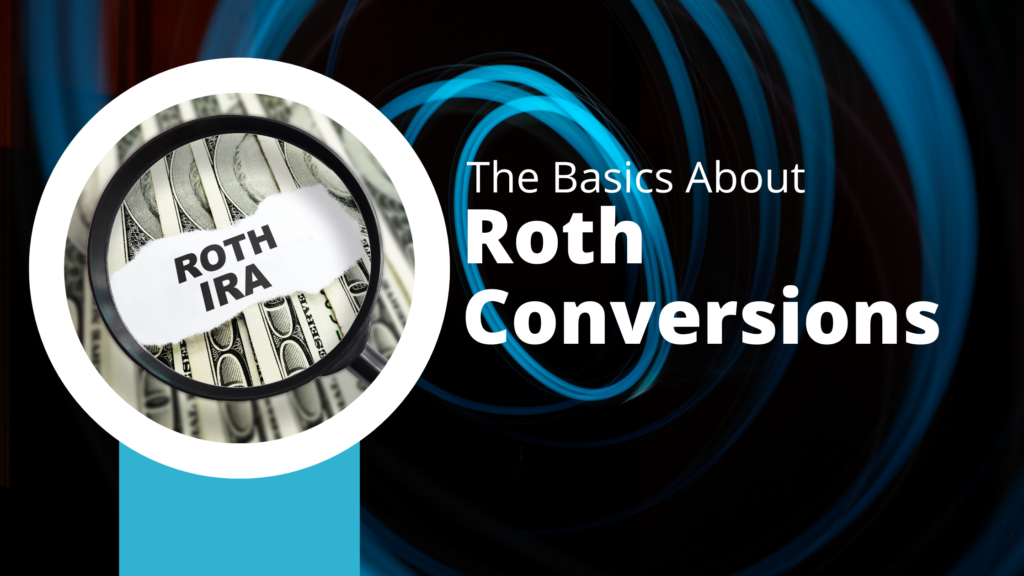If you are like most people, you are probably confused by the concept of Roth conversions. In this blog post, we will take a look at what Roth conversions are, why they can be beneficial to your overall retirement plan, and how they work.
What is a Roth Conversion?
Simply put, a Roth conversion is the process of transferring money from a traditional IRA to a Roth IRA. Unlike a traditional IRA, a Roth IRA allows for tax-free growth and withdrawals in retirement. Ultimately, we utilize the Roth conversion process to help identify and realize income in the lowest possible tax bracket. Additionally, Roth IRAs do not have required minimum distributions (RMDs), which means that account holders can continue to grow their accounts tax-free for as long as they like.
Should You Consider a Roth Conversion?
There are several reasons why a Roth conversion may be beneficial to your retirement savings:
1. Tax Planning
If you believe that your tax rates will be higher in retirement than they are now, a Roth conversion allows you to pay taxes on your retirement savings at today’s lower tax rates. This can be especially beneficial if your income has dropped due to a severing of employment (whether due to retirement or otherwise).
2. No Required Minimum Distributions (RMDs)
Roth IRAs do not have RMDs, which means that you can continue to grow your accounts tax-free for the rest of your life. This can be especially beneficial for those who do not need to withdraw funds from their retirement accounts for living expenses.
3. Estate Planning
Converting to a Roth IRA can be a great way to leave money to your heirs. Unlike traditional IRAs, Roth IRAs do not have RMDs for beneficiaries. This means that the money can continue to grow tax-free for the rest of the beneficiary’s life.
How Does a Roth Conversion Work?
The Roth conversion process is relatively simple. You will need to contact your IRA provider or financial advisor to request a conversion. If you do not already have a Roth IRA established at your IRA provider, you will need to establish one at this time. Once you have made the request, the funds from your traditional IRA will be transferred to your Roth IRA. You will need to pay taxes on the amount of the conversion in the year you make it. Additionally, once you have converted to a Roth IRA, you cannot undo it.
Uncle Sam with an Outstretched Hand
Taxes will be owed for the year in which the conversion takes place. While estimating the amount of taxes due is a relatively simple and straightforward math problem, determining how to pay those taxes is what can cause the stomach acid to churn. The question of how to pay those taxes ultimately boils down to two options: withholding from the conversion or coming up with the funds out of pocket. While the tax code does allow for the withholding of taxes on the conversion, this can really lessen the impact and thus the desirability of the conversion if taxes are withheld. In other words, because withholding taxes from the conversion lessens the amount that goes into the tax-free bucket of the Roth IRA, my preference is to come up with the funds out of pocket.
For many retirees, their retirement income consists largely of Social Security benefits, pensions, and traditional IRA distributions…all of which increase your taxable income in retirement. Roth conversions, on the other hand, allow individuals to have more control on when they realize income. The tax-free growth of Roth IRAs can significantly boost retirement income and minimize tax burdens in the long run. Additionally, Roth conversions offer estate planning benefits, as the funds will be received tax-free by the beneficiaries. Overall, implementing Roth conversions early in retirement planning can lead to a financially secure and tax-efficient retirement.
This post is for educational and entertainment purposes only. Nothing should be construed as investment, tax, or legal advice.

